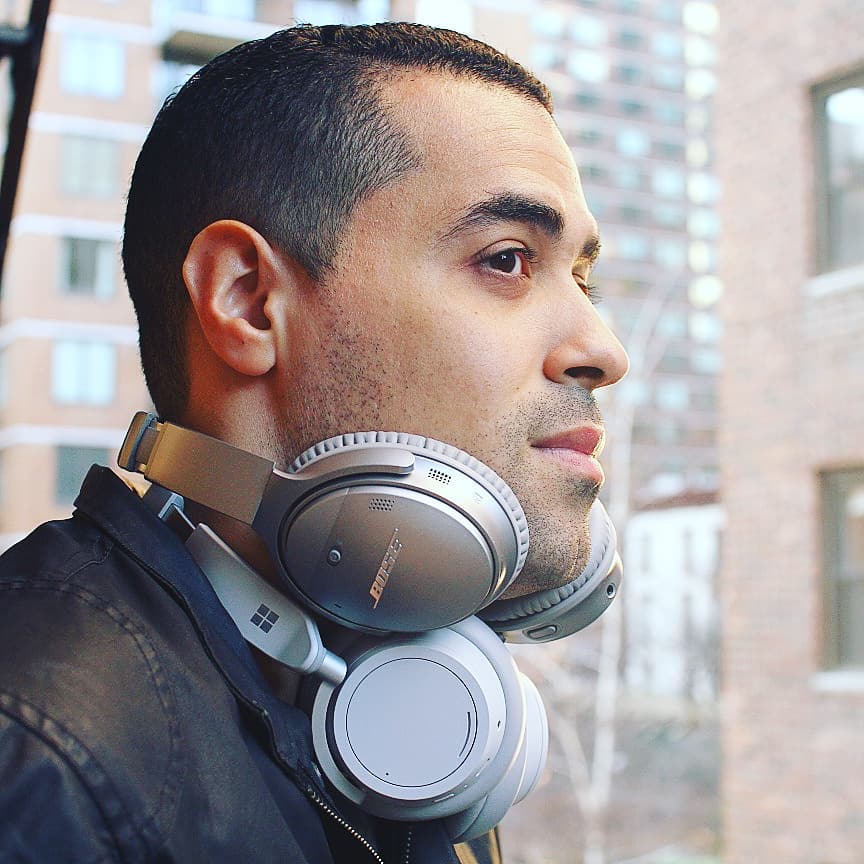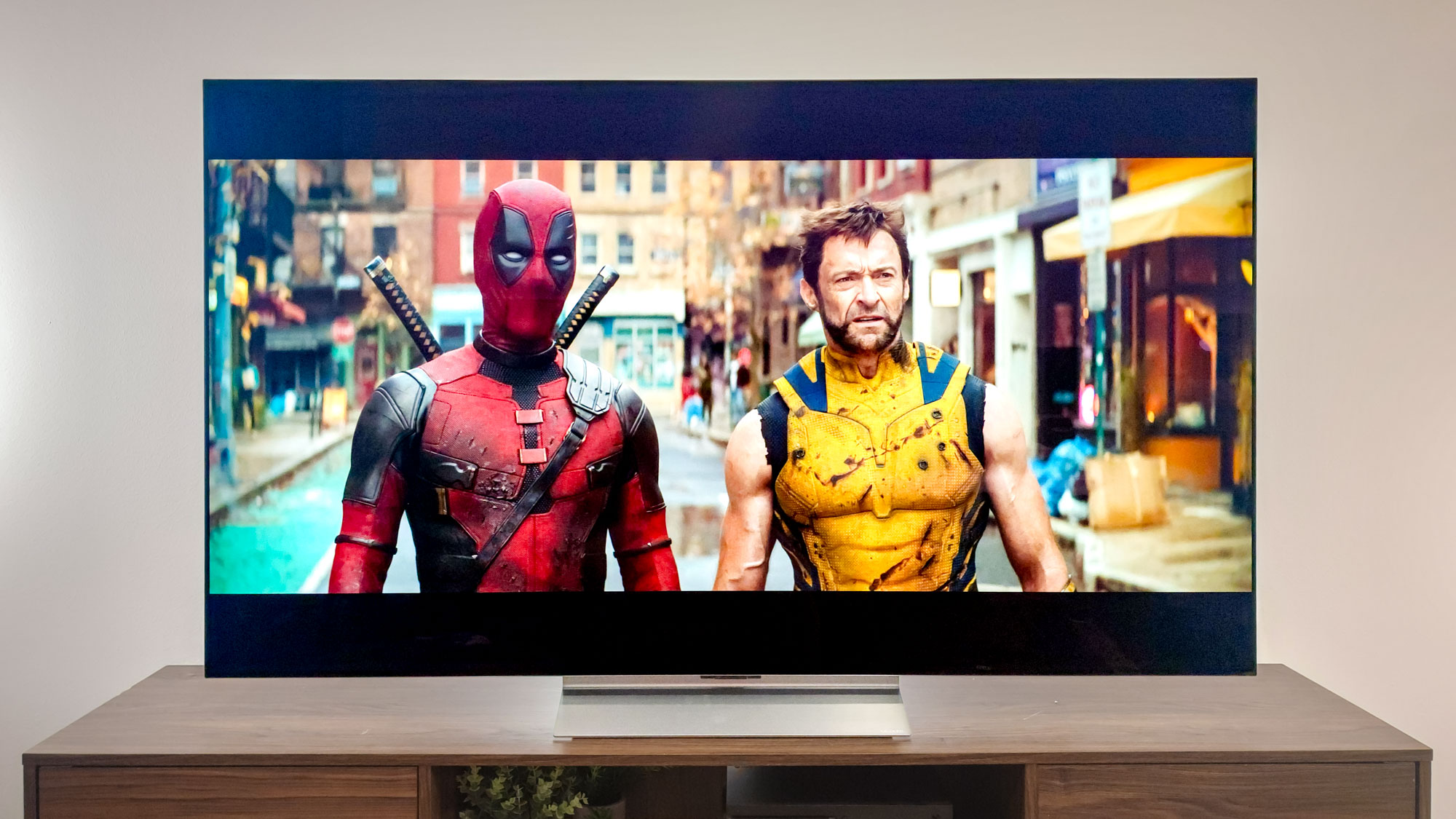Tom's Guide Verdict
Far from cheap, the Focal Clear sells you on beautiful sound and build quality for a higher-than-normal premium.
Pros
- +
Distortion-free sound
- +
Luxury design
- +
Sound reproduction is stellar on all audio devices
- +
Sturdy and sleek aesthetics
- +
Spacious, durable carrying case
Cons
- -
Lack of accessories, controls, and extra features
- -
Noise isolation is practically non-existent
- -
Very expensive
Why you can trust Tom's Guide
You have to be a serious audio head to consider spending $1,500 on a pair of headphones. If that’s the case, then the Focal Clear deserves your full attention. These open-back circumaural headphones combine the brand’s prestigious craftsmanship and proprietary technologies to recreate the dynamic sound of its loudspeakers.
The result? Sheer sonic bliss housed in a luxury shell. However, the Clear has zero noise isolation and lacks extra features that help personalize your listening experience, which may sway you to consider other expensive models like the Audeze LCD-3. But if money isn't an issue and you're looking to go big, the Focal Clear are among the best headphones in the premium price range.
Focal clear design
Focal knows how to create attractive audio hardware. Its entry-level Elegia headphones are well constructed, and these pricier cans share similar attributes, but with a more elegant look that stays true to the company’s design pedigree.
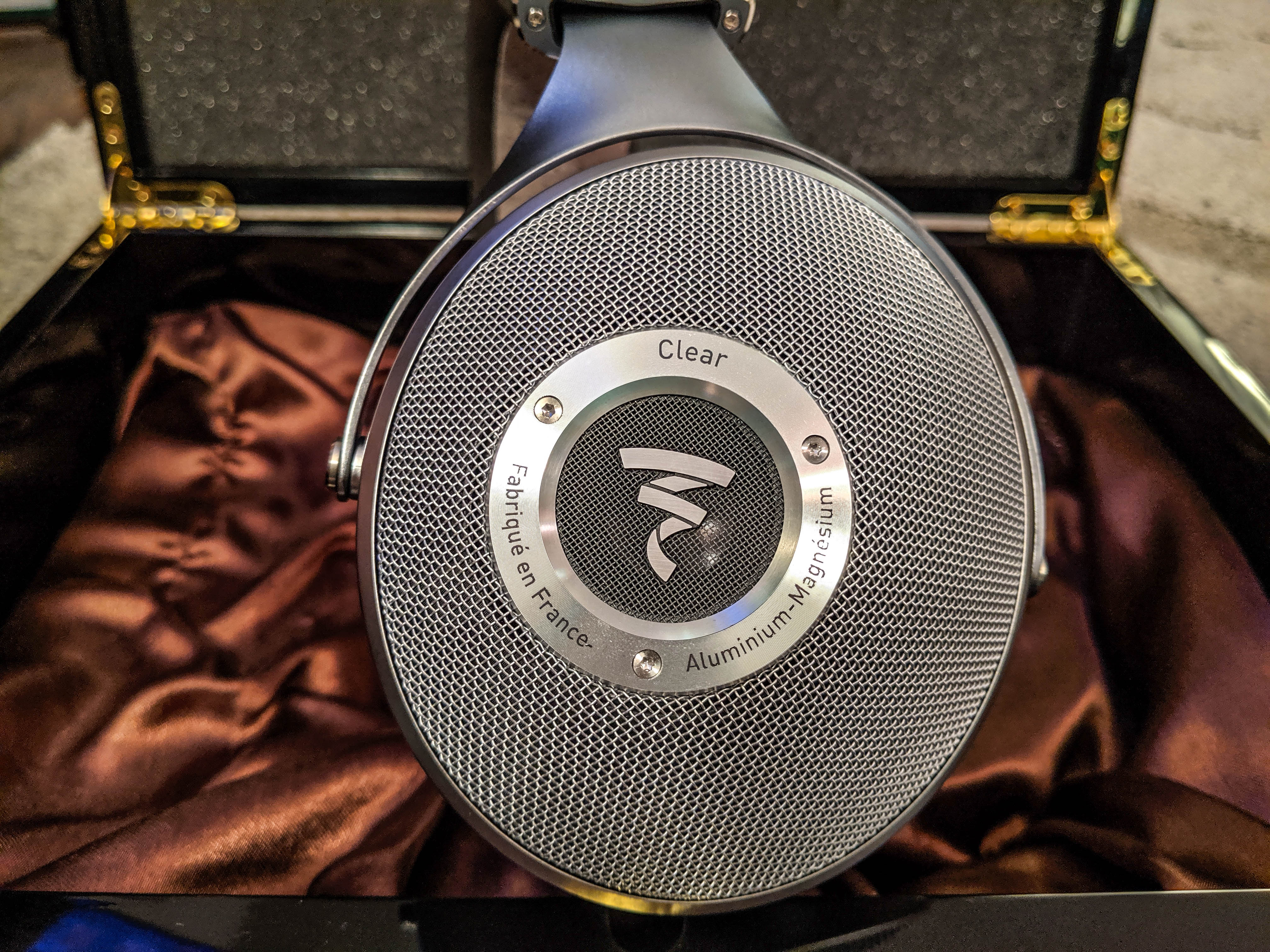
The first detail that immediately caught my eye is the mesh grille on the exterior, which has become symbolic with the open-back circumaural category (thank you very much, Sennheiser). It screams industrial, yet class, and upholds the refined appearance of top-tier studio speakers. The etched logo in the middle is a sweet finishing touch.
Even though the yokes don’t have the same distinctive arch as the Elegia, they still have a thin and solid frame. It will require a lot of force to bend. But it’s the slate-gray finish that gives these headphones their charm.
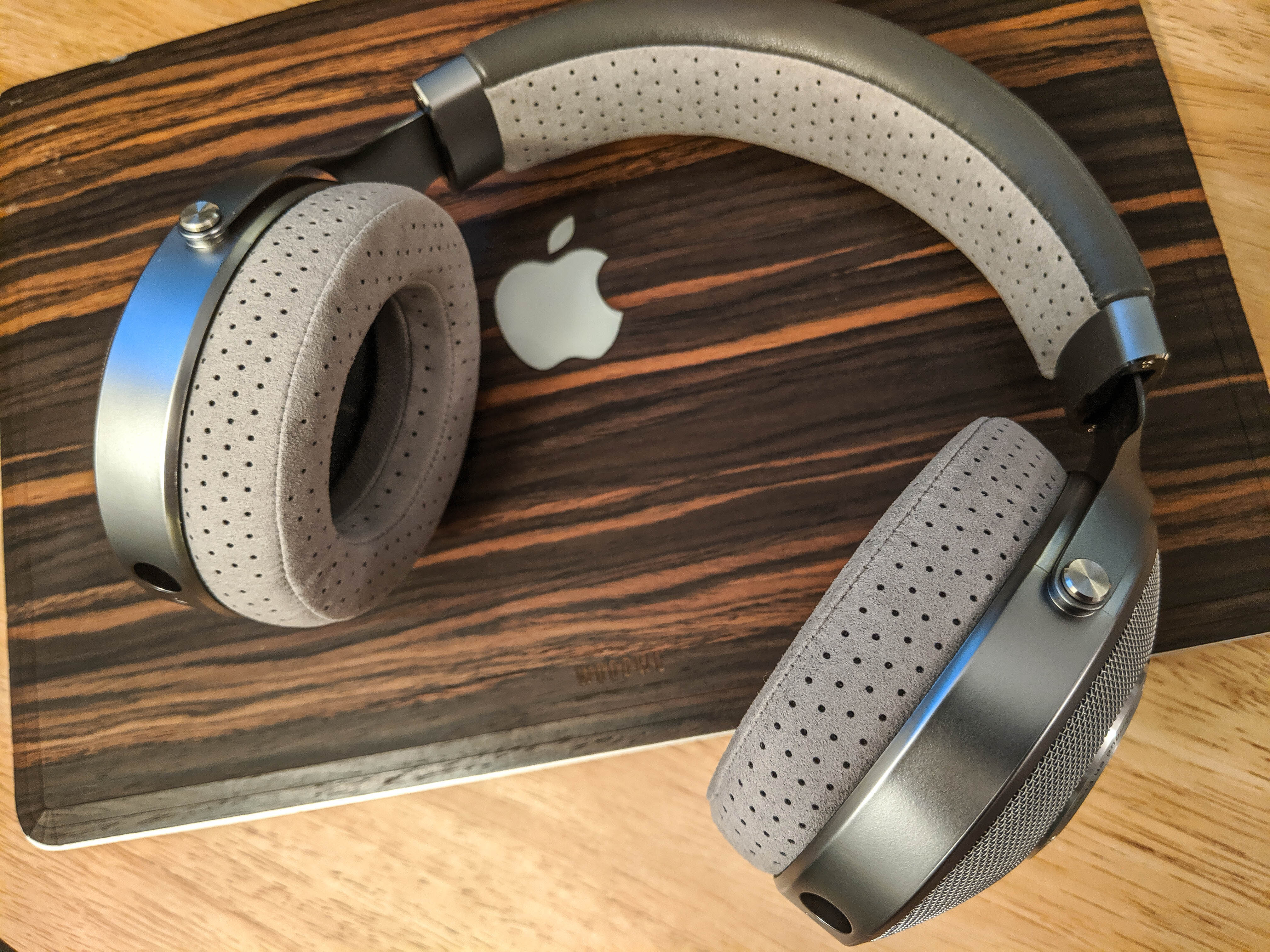
The only other noticeable difference in design between the Elegia and Clear are the earcups. Both models use the same micro-fiber material, but the Clear’s earcups have perforations to cool down overheated ears. The headband feels just as comfy with premium leather wrapped around it.
Focal clear comfort and fit
At nearly a pound (15.8 ounces), the Clear is in the same weight class as the Elegia, but far heavier than most noise-cancelling headphones. Despite its massive frame, the Clear does make for a pleasant wear, as long as you limit listening to a reasonable time frame; I recommend 1 to 2 hours max.
The perforated earpads maximize comfort by ventilating sweaty ears. They also have pliant cushioning that doesn’t press up hard against or around the ears. I’m also fond of the circular cutouts that offer a generous amount of space for listeners with larger ear shapes.
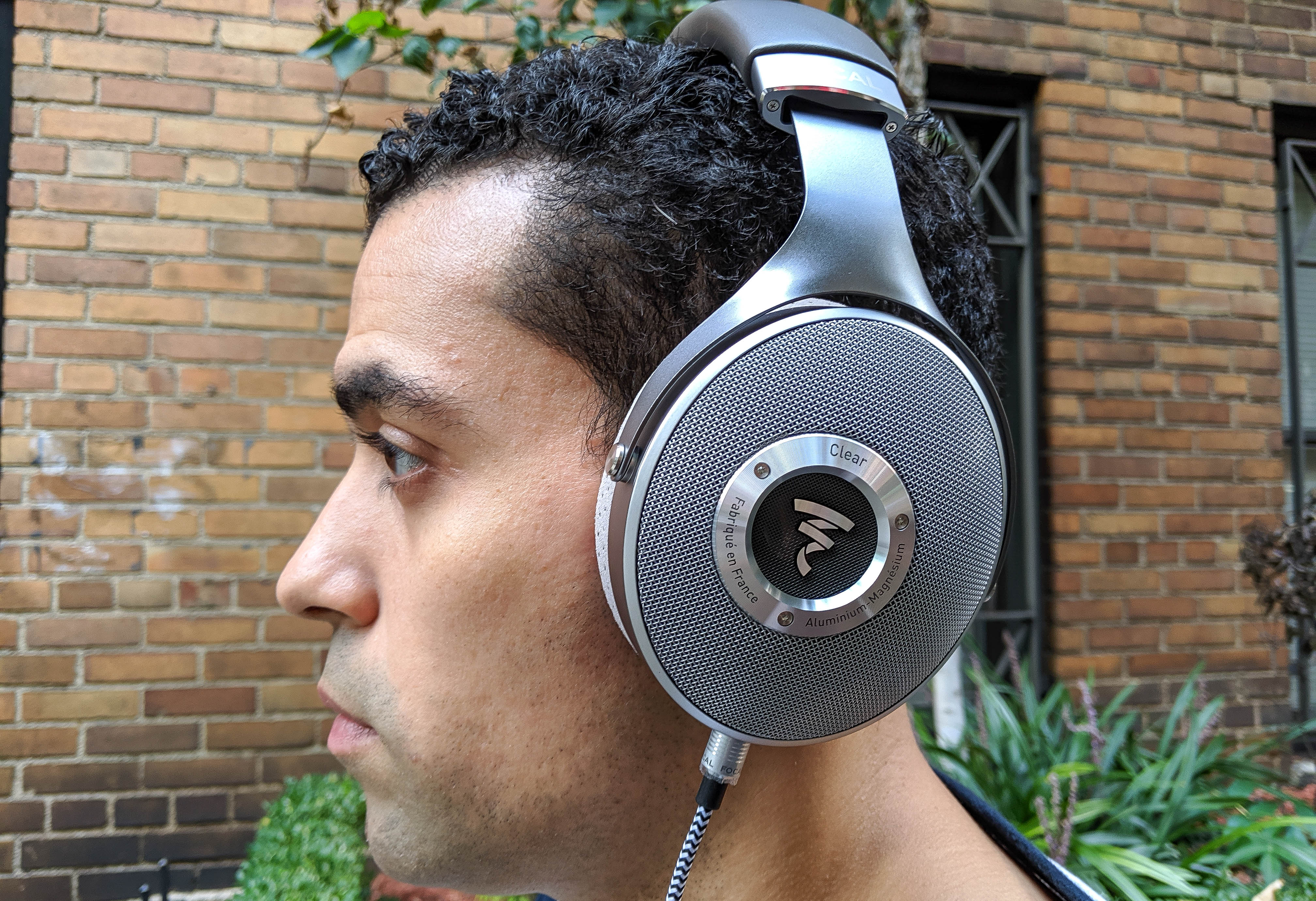
The Clear has a firmer headband than the Elegia, but it doesn’t apply the same unwanted pressure atop the head. This provides some relief when zoning out to playlists for long stretches. The yokes appear shorter as well to ensure a more secure fit.
Focal clear accessories
Expect nothing different than what comes bundled with the Elegia. This includes a 3.5mm aux cable, gold-plated 3.5mm adapter, and a large, durable zippered case with molds on the inside to store everything nicely. I will say that the quality is remarkable on all of these, primarily the case, which can hold extra EDC items, if necessary. The aux cable shouldn’t be overlooked either, wrapped in a heavy-duty woven fabric with a Velcro strap to conveniently wrap up when travelling. If only it was longer.
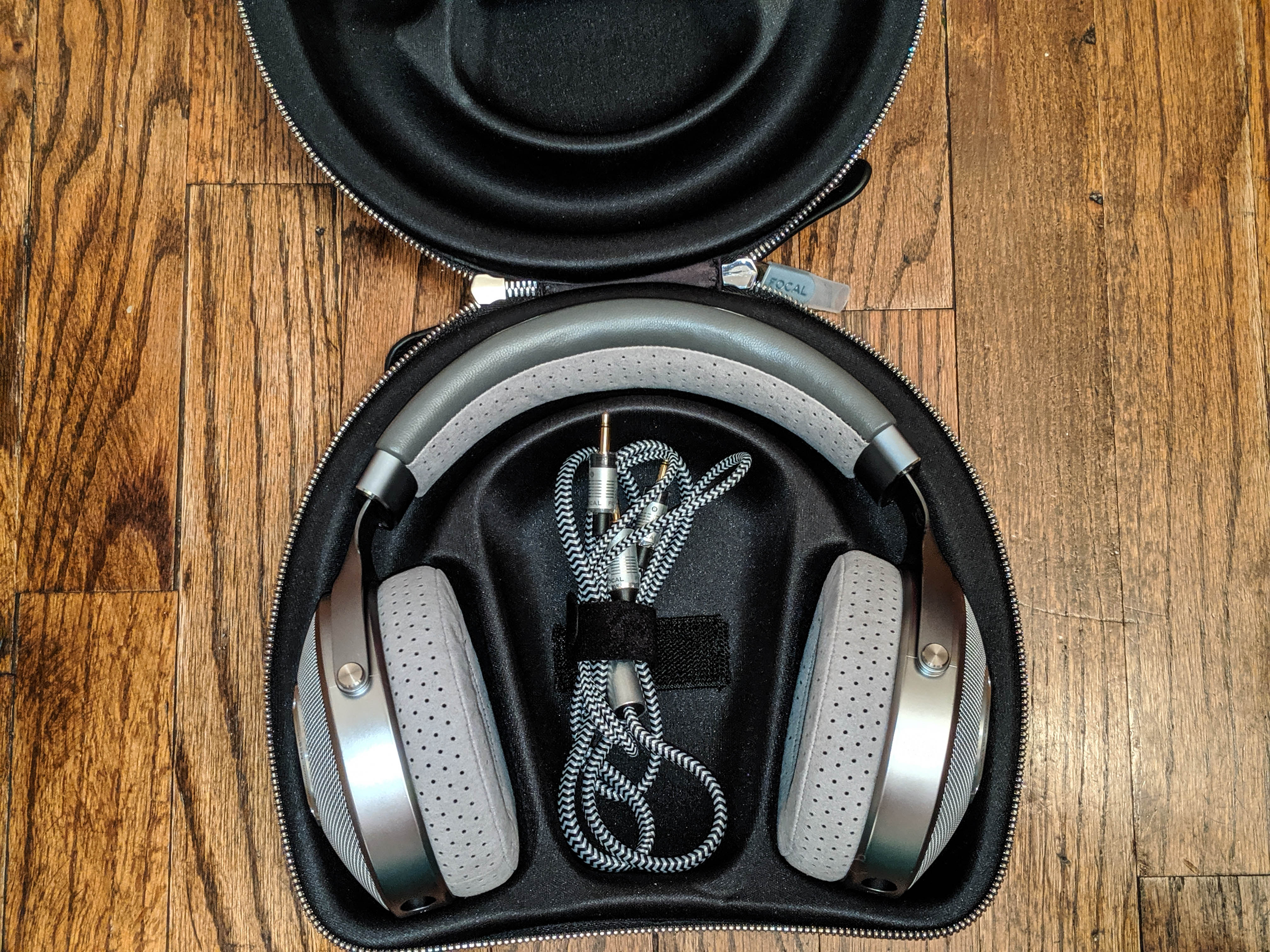
Aluminum-magnesium power
Like the Elegia, these cans employ Focal’s proprietary ‘M’-shape aluminum/magnesium driver. Paired with a new copper voice coil, these two components are said to improve “dynamics over the entire spectrum,” producing tighter bass and highs. While I wasn’t able to test the company’s older and more beloved beryllium driver for comparison, I can say that this alternative delivers on its promise.
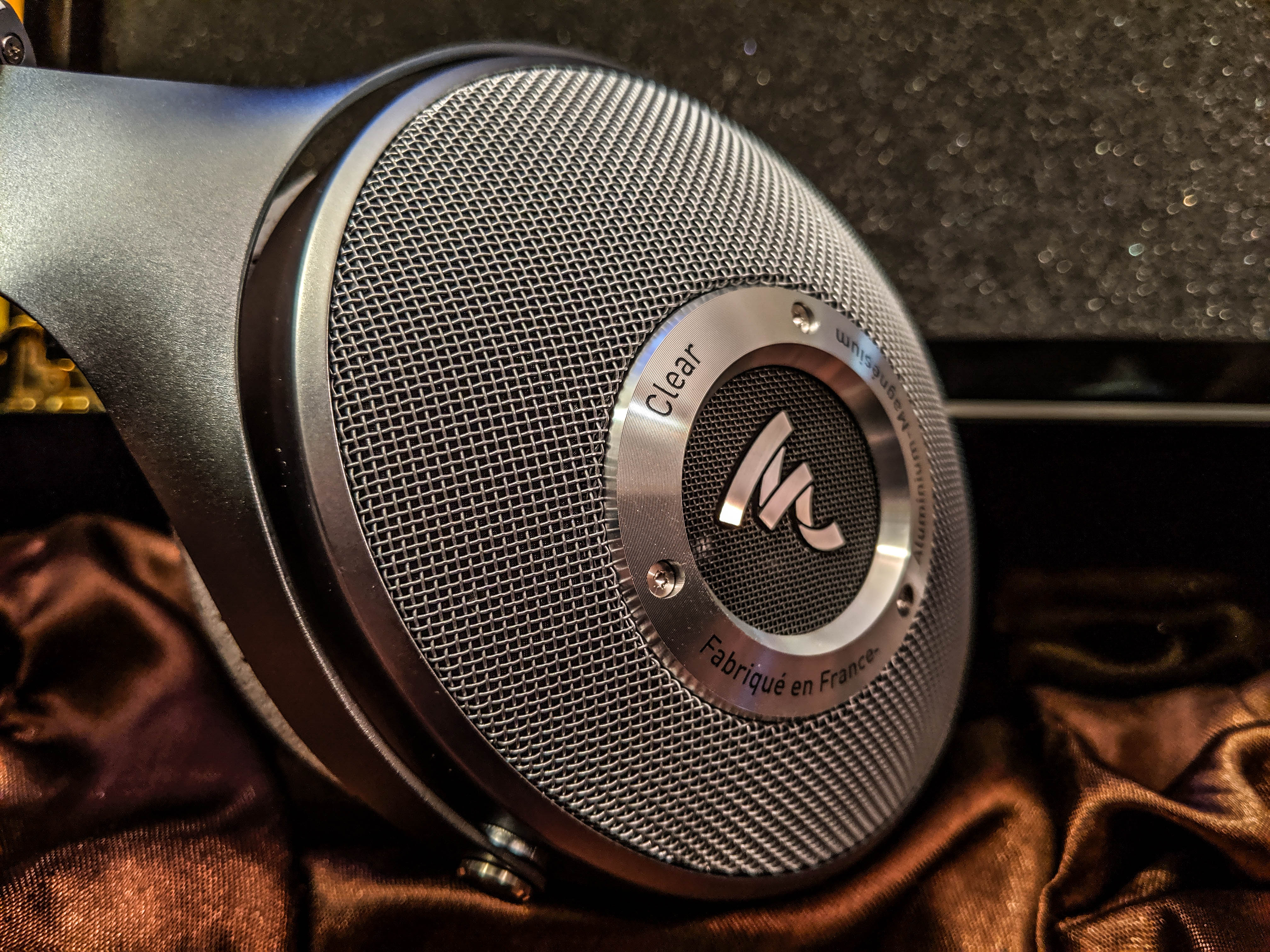
The Clear has an impedance of 55ohms and a sensitivity of 104db. To simplify the technical jargon, the driver doesn’t just optimize volume levels across different audio sources (e.g. laptops, smartphones, etc.), but also eliminates the need of any extra hardware like a headphone amp to boost sound. Separation between frequencies was impressive, but it was better on plantar magnetic drivers; the transition from lows to mids was smoother on the Audeze LCD-3.
Focal clear sound quality
Seeing how the Elegia and Clear share the same driver, audio should sound the same, correct? Not exactly. The Clear has a flatter sound signature that reveals the purest details from the most complex recordings.
Acapellas really soar on these cans. Look no further than the intro to Queen’s “Bohemian Rhapsody” for confirmation. The group’s harmonies at the start of the record sound beautiful and crisp; the synthesized vocals have a naturalness to them. Even the overdubs (the song apparently has over 180) like the “Galileo” repetitions and Chinese gongs at the end have more transparency to them.

The acoustic guitar on Oasis’ “Wonderwall” pulled me in with every strum, but it was the different string arrangements sprinkled throughout the recording that made the listen more enchanting. I’ve never noticed this when testing popular mid-luxury headphones like the Bose 700 and Sony WH-1000xM3. Clarity was so spot-on that I felt the vulnerability in Liam Gallagher’s voice on the somberly-crooned hook. The LCD-3 gave me the same feels, although its low end felt tamer.
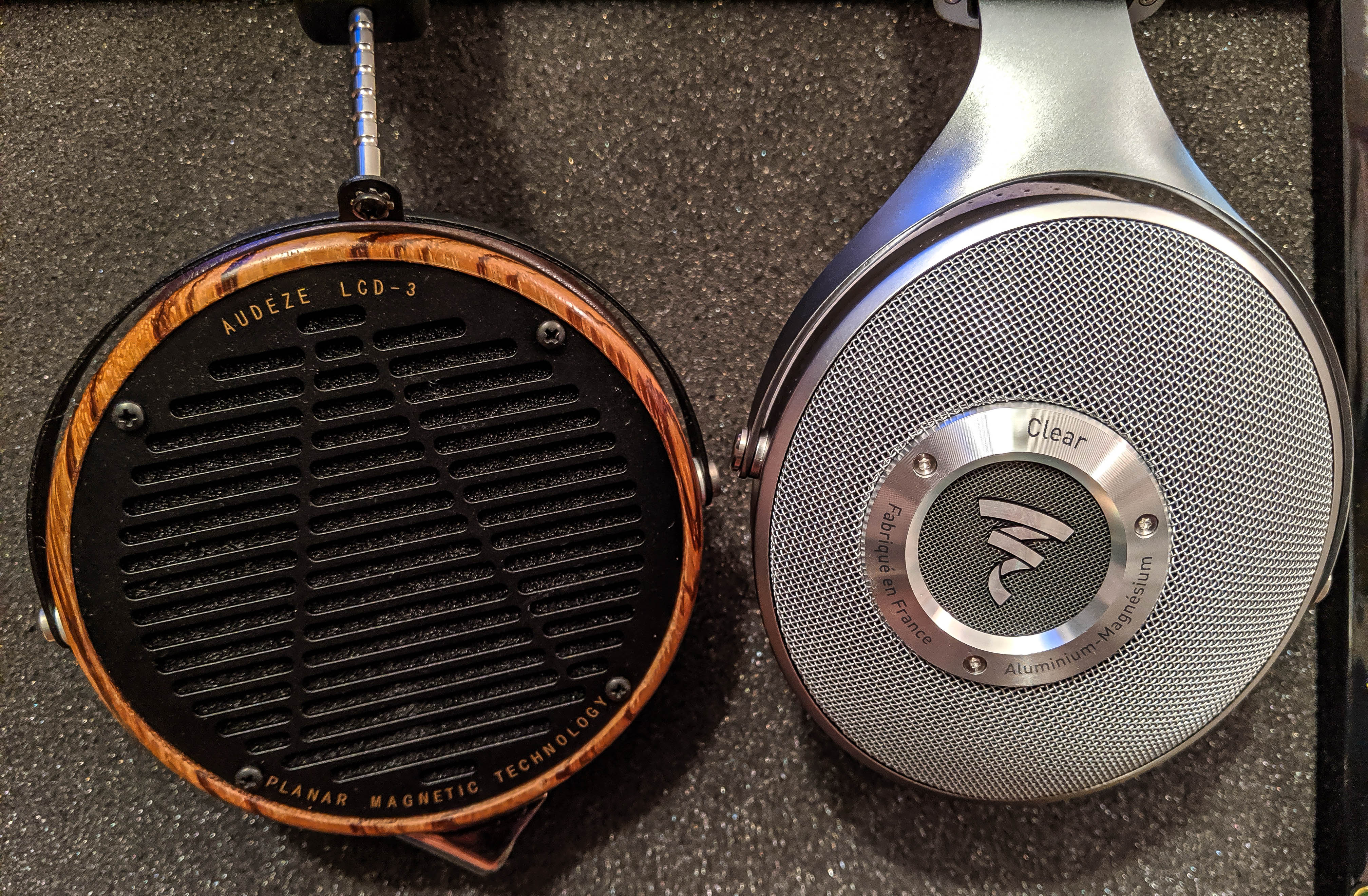
Bass levels on the Clear are carefully balanced as well. When playing bouncy selections like Notorious B.I.G.’s “Mo Money Mo Problems,” the drums and guitar licks had a striking presence that made vibing along to the record joyous. However, not every song showed this level of performance. Was it intriguing to hear The White Stripes “Seven Nation Army” without its signature distorted effects? Yes. At the same time, the recessed vocals and guitar riff diminished its boomy appeal.
I preferred the LCD-3 and WH-1000xM3 for bass-heavy content, but I also appreciated how well balanced the low end was on these cans.
Focal clear noise isolation
The Clear has zero noise isolation. It was tough listening to music outside due to all of the environmental interference that made its way onto the soundscape; car horns and construction tools sounded like background effects on hip-hop songs. Being indoors didn’t fare any better, as I could hear analysts speaking during live football games with the TV at low volume. Raising the headphone volume didn’t fix this issue. The only thing worse than the noise isolation is the amount of sound these cans bleed. My fiancée identified every Jay-Z song I played from about 25 feet away.
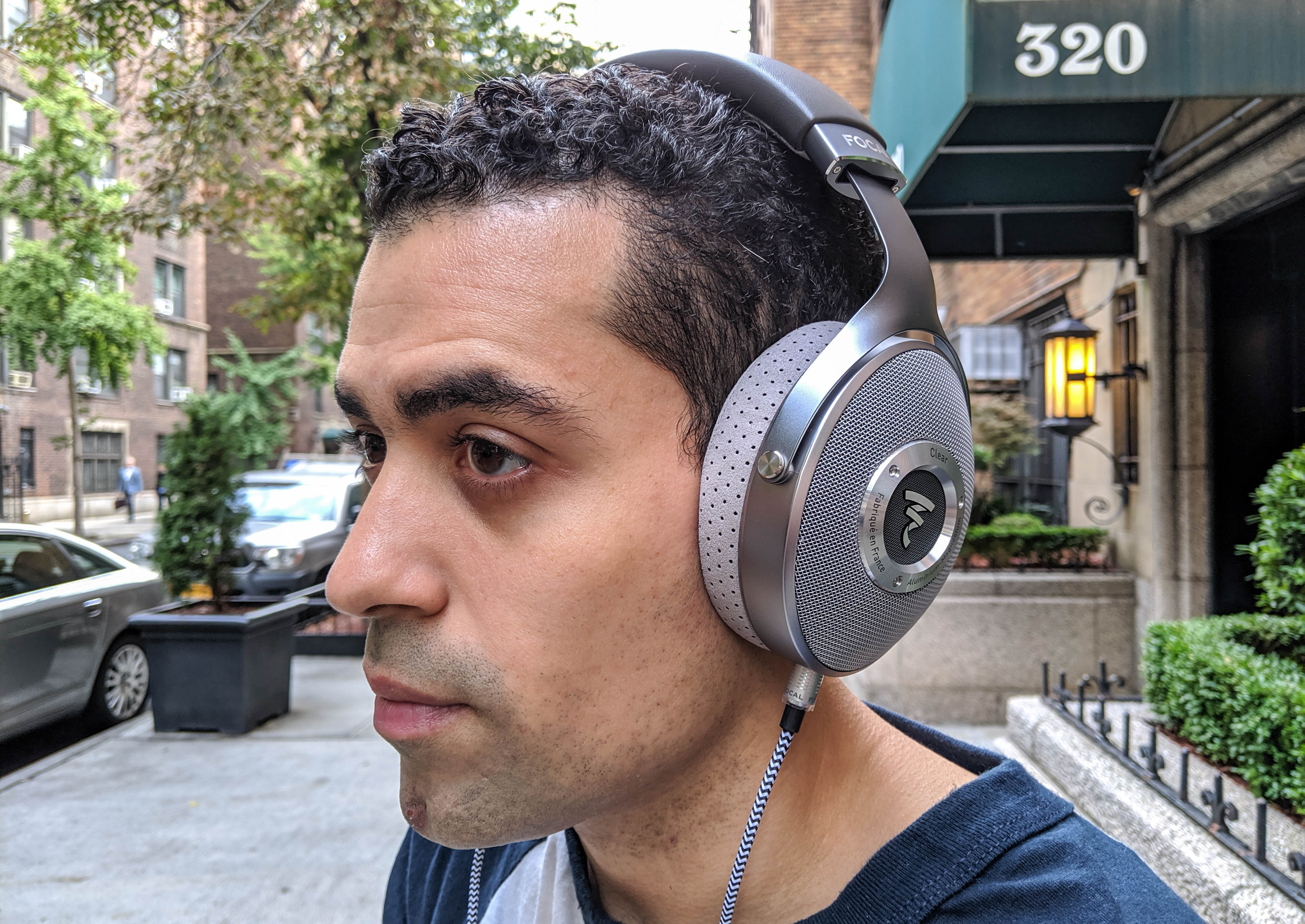
Focal clear portable sound
As if poor noise isolation didn’t already make these cans impractical for portable use, girth also factors into the equation. They will your weigh you down during commutes. It’s a shame too considering how much the Clear improves sound quality on music and video apps. When I did get the chance to pull up Spotify in a private setting, hip-hop songs had more oomph to them. I’ve always loved the WH-1000xM3’s strong bass performance on mobile devices, but the Clear wasn’t as overpowering on my ears and elevated vocal clarity on the Google Pixel 3 XL.
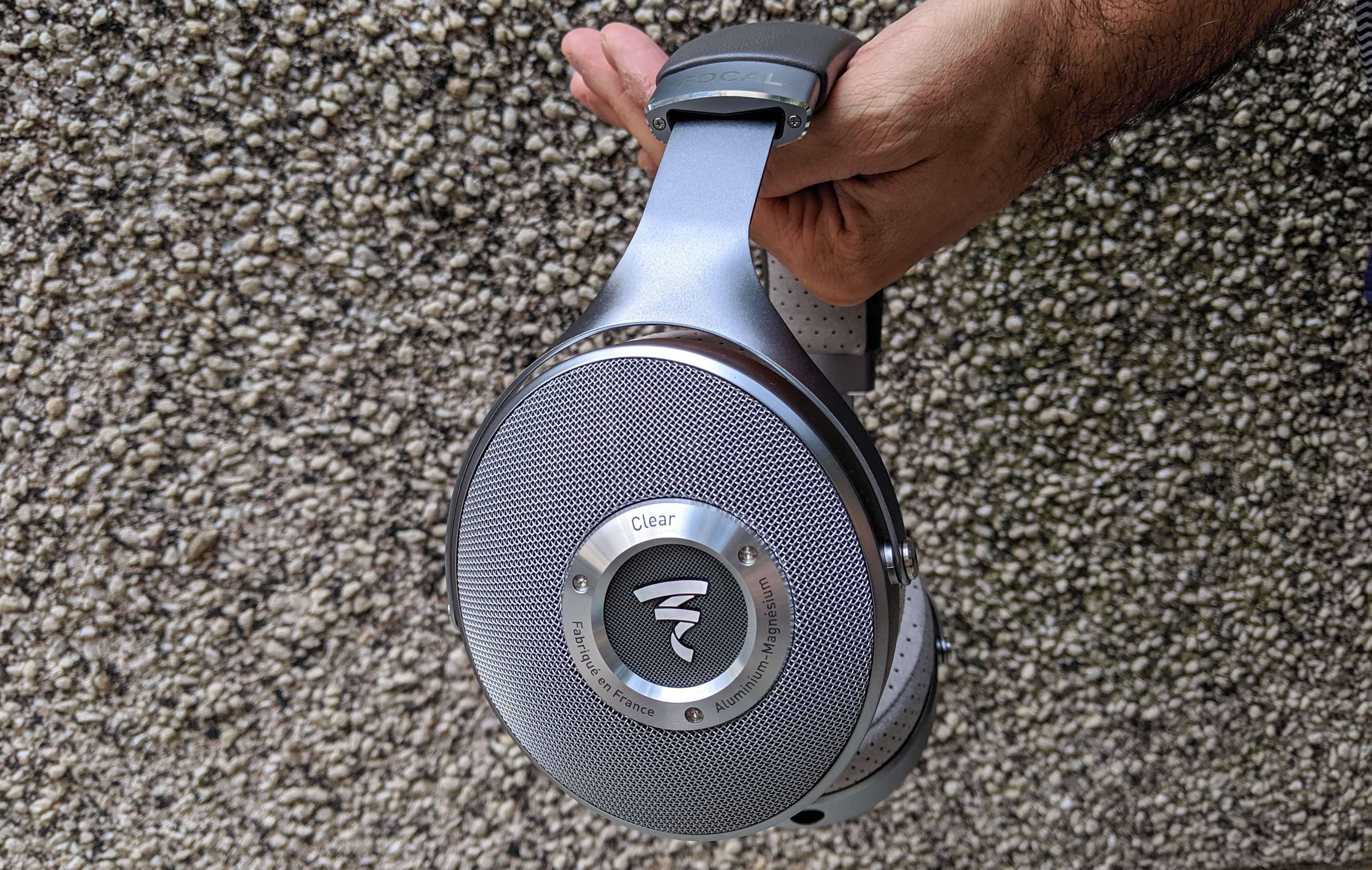
Bottom line
While the Elegia is capable of offering a similar sonic experience for a lower price, the Clear remains the better-looking and sounding pair of headphones. You can only marvel at its clean, premium aesthetics, which are almost as pristine as the sound profile. Audio is also more uniform with smoother frequency response.
But if you thought the Elegia had its fair share of compromises, the Clear presents the biggest with its noise isolation struggles. The perforated earcups do nothing to block out ambient noise and bleed sound as loudly as some portable speakers. These are not headphones designed to be worn outside, and if worn inside, you’ll want to be in a secluded area to fully enjoy them.
Again, $1,500 is a lot to ask for any pair of headphones, but an investment worth considering if you want natural-sounding cans that look and sound this good. Otherwise, look at other high-profile alternatives like the Sony WH-1000xM3 ($250) that can get the job done for a fraction of the cost, and has lots more features.
A lifestyle journalist with an affinity for consumer products, Alex has over a decade of experience and has worked with popular publications such as Complex, Thrillist, Men’s Health, Gear Patrol, AskMen, and Hoop Magazine. He currently focuses on audio, reviewing the most coveted headphones in the market for both Tom’s Guide and Laptop Magazine.
-
internetname Hi Alex,Reply
I appreciate the review but just a couple notes:
These are, as you mentioned, open-back headphones. This means they do not have any material behind the driver other than the mesh you see, unlike closed-back headphones such as the Elegia. There are reasons for this which you are free to look into, but the point I want to make is that open-back headphones are not designed to, do not, and will not isolate sound. Shine a light through the back, and you will see it in the cup. Sound is completely free to both enter and escape the ear cups; this is common to all open back headphones. If you require sound isolation, whether to block outside sound from getting in or to avoid disturbing other people in the room, you should get closed-back headphones. If that isn't enough, look into noise cancelling headphones. Not for nothing, but the perforated ear pads are also designed to affect the soundstage, not just keep your ears cool.
Additionally, regarding accessories, if you dig around in the packaging a bit more you will likely find another box with a three meter cable ending in a 1/4" TRS jack, and another three meter balanced cable ending in an XLR 4-pin connector. If not, call your dealer because you're missing parts. As for controls for your phone, which I'm assuming is what you were referring to in the "against" column, you're just not going to find those at this level. Extra stuff on the wire can mess with the sound, and the sound is the only focus of this product.
I have a pair of these and a pair of Bose QC35s. They are both very good at what they do, but they do different things. The Bose are great at taking calls, cancelling noise on a plane or a commute, and sounding pretty ok while listening to music streamed from my phone. The Focals are absolutely exceptional at reproducing music beautifully, and nothing else. Both are headphones in the same way that a box truck and a race car are both vehicles. Yeah the truck can probably make it around a track but it'll be nothing like what the car can do, and the car will be absolutely terrible at hauling lumber. Always best to use the right tool for the job.
All the best and hope you're well -
Tyrg09 Very well said. I have those headphones and I have to say they are expensive. But when I tested them in the store I loved their signature. They are very good for what they do and deliver. I find myself turning my head sometimes when listening to music as I'm trying to locate an instrument. This is how you know you got some really good headphones 😊. They are expensive for a reason. I'd rather have one of this than 5 of cheaper headphonesReply -
Tyrg09 These are open back headphones Alex. Fine expect noise isolation. No open back headphones offer noise isolation and if they do you miss out on what makes open back headphones great.Reply
